AEON: Italian B&B Toes the Line Between Modern and Rural
A new hotel nestled in the mountains of northern Italy offers a one-of-a-kind experience for visitors, thanks to its strictly divided color scheme of blue and white throughout.
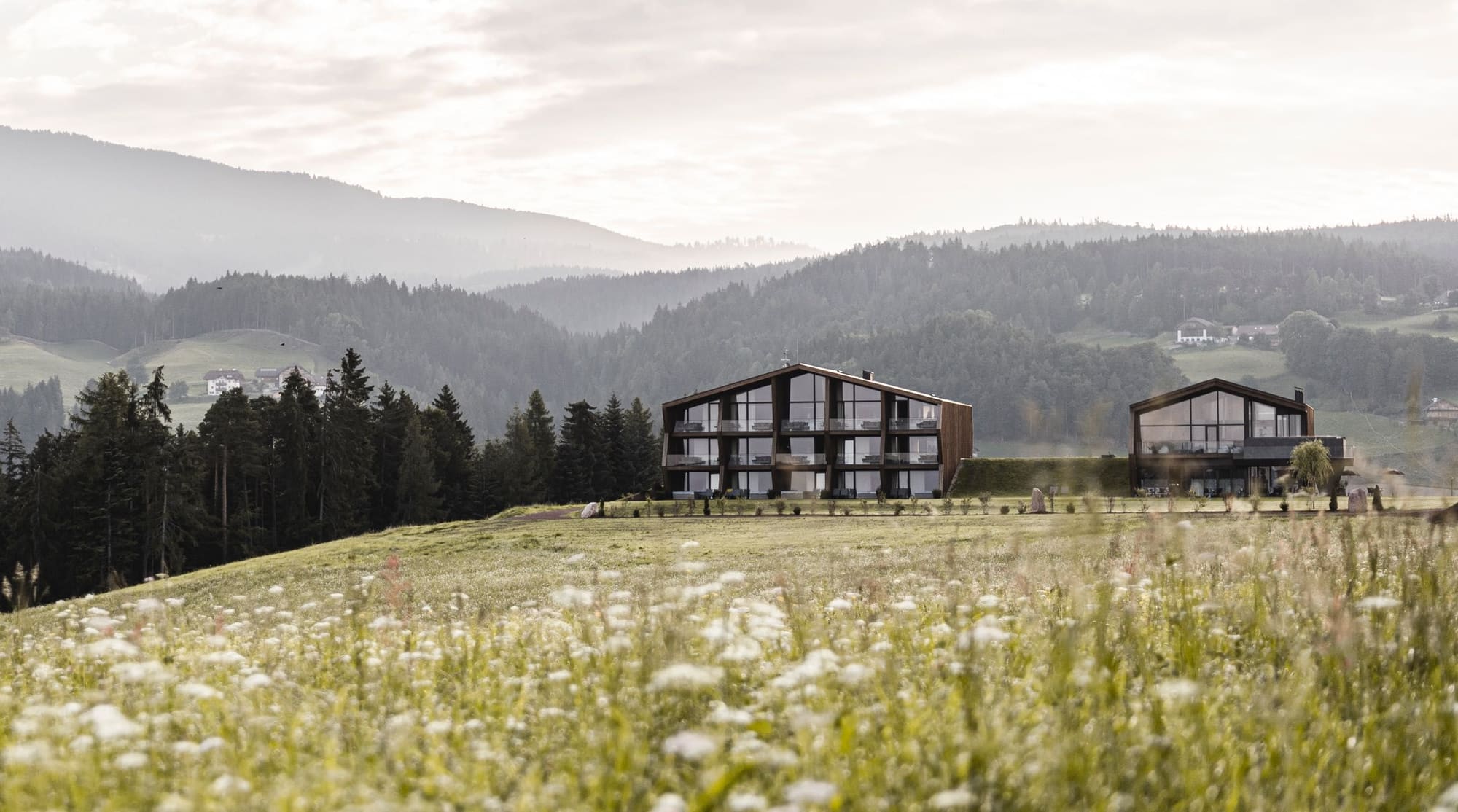
The south Tyrol AEON Hotel was designed by noa* (network of architecture), a firm based in Bolzano, Italy who used this project to highlight the boundaries and connection between old and new worlds.

“The creation of an ambivalent tension between the centuries-old tradition of the rural complex and an exclusively modern statement was the basic principle underlying the design process,” explains designer Christian Rottensteiner on the noa* website.
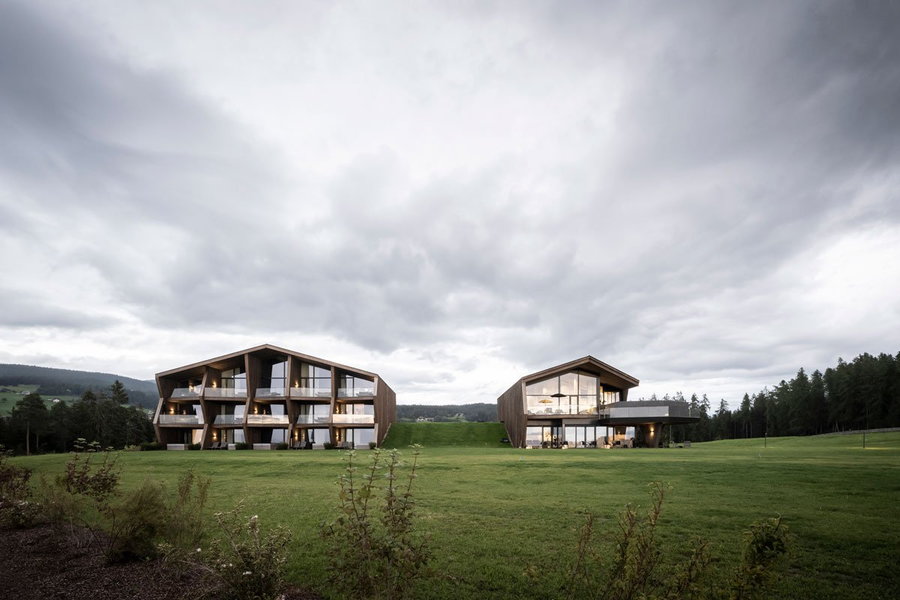
Instead of one large structure, the architects decided to begin the theme of duality with two separate barn-shaped buildings. The exterior forms pay homage to the 550-year-old farm on which the B&B resides. Gabled roofs and wood siding harvested from the property’s own forest, as well as the family’s old coat of arms from 1464 posted on the entry, highlight the past of the hotel that was formerly the historic Lobishof Inn. Pentagonal floor-to-ceiling windows on every floor provide stunning views of the Merano Alps, Dolomites, and Rittner Horn.


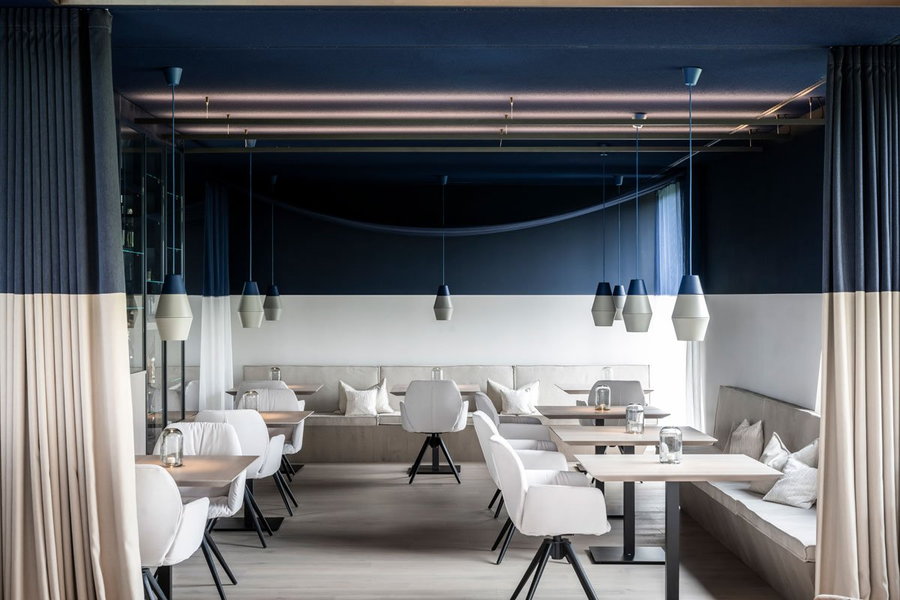
Moving inside, the first building houses the common areas, including a reception desk, bistro, bar, and wellness area. The color contrast is immediately apparent and striking. A deep blue covers the ceiling and top one-third of the walls, while whites and creams comprise the bottom two-thirds and the floor. The hues were chosen specifically to convey a sense of the past and future: “A soft beige – communicates feelings of being grounded, familiar, delicateness – meets a mystical blue that embodies the future, the mysterious, the uncertain,’ the noa* website says.
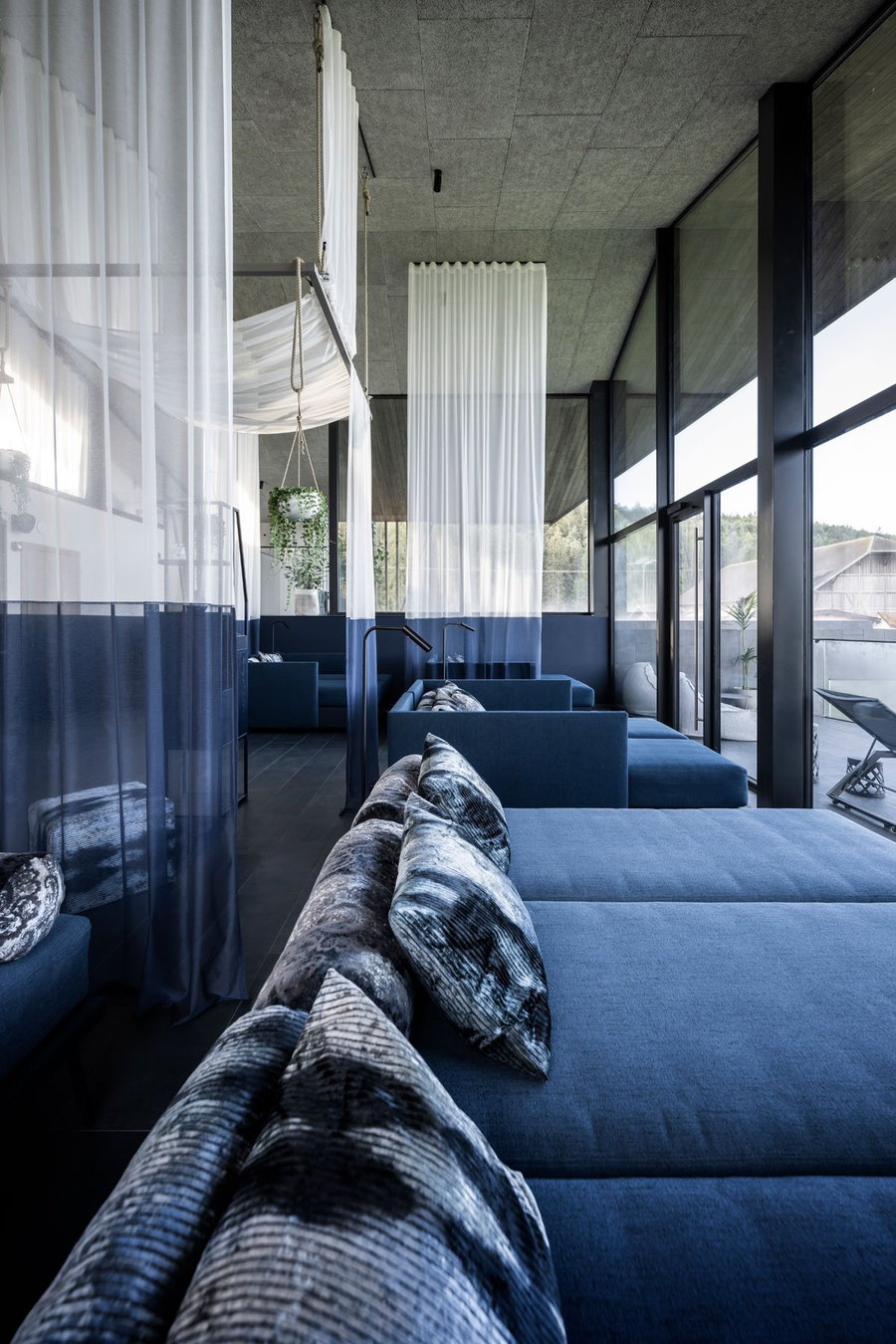
These tint divisions don’t merely run through the walls, but also cut across furniture and fixtures at the exact same horizontal planes. Only in the wellness area is the color play inverted, with navy on the bottom and white on top, representing the feeling of wading or floating in water.
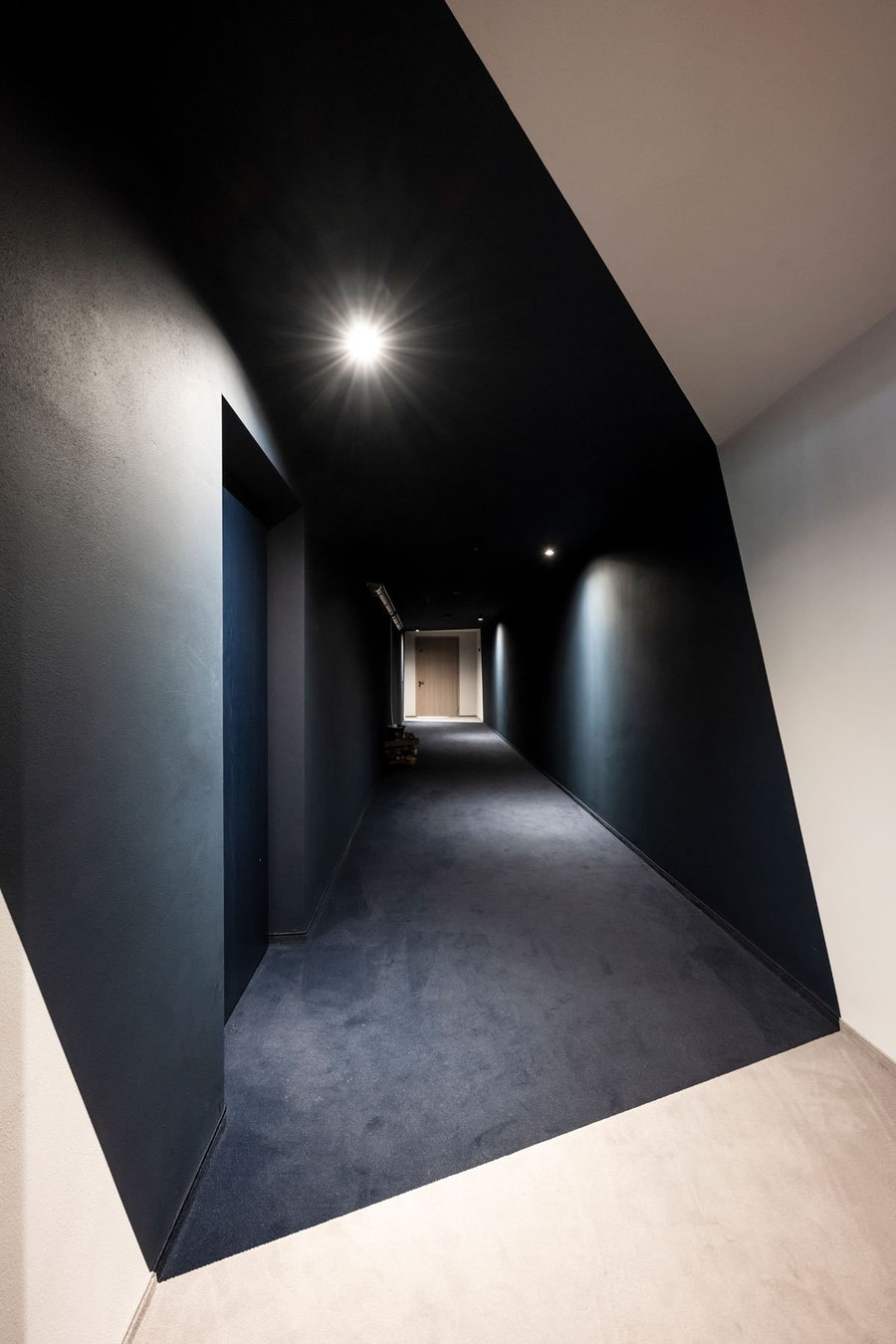
To enter the second building, a collection of 15 guest suites, there’s no need to enter the outside world again. Instead, the designers created a tunnel between the two structures, ingeniously buried under a manmade hill. Moving through this tunnel is a similarly transportive experience, as the walls are intersected by harsh angles of contrasting blue and white. “Guests are invited to move through and sense this cosmos between polarizing environments,” explains noa* interior designer Patrick Gürtler.
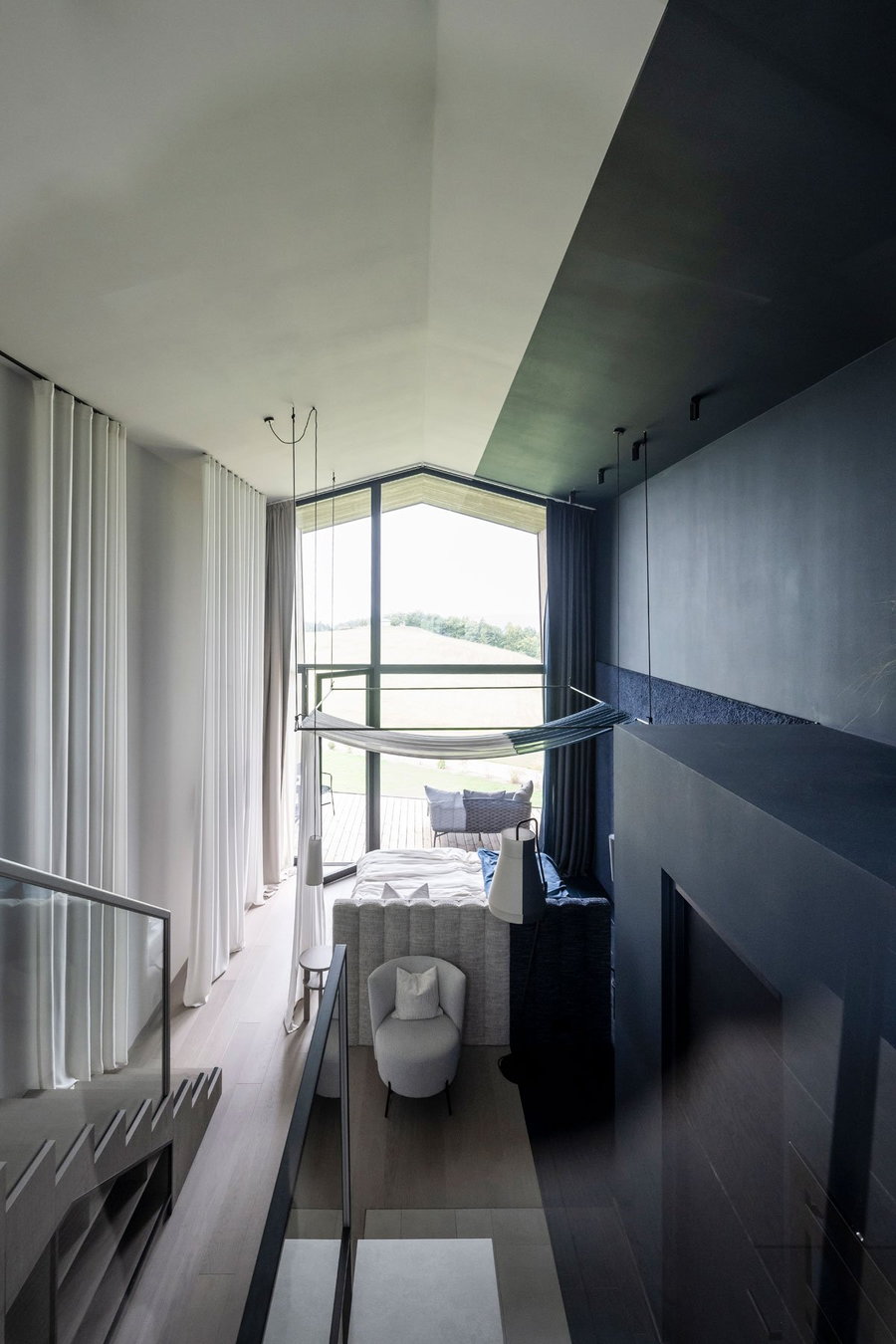

The tone of the B&B shifts in the guest suite barn, where all color divisions become vertical. Rugs, bed, tables, and even lamp shades cannot escape being split by these lines. The Gallery Suite is perhaps the most arresting example of the separated verticality, as it features a two-story-high ceiling and a “living platform” on the roof for cozily gazing into the heavens.
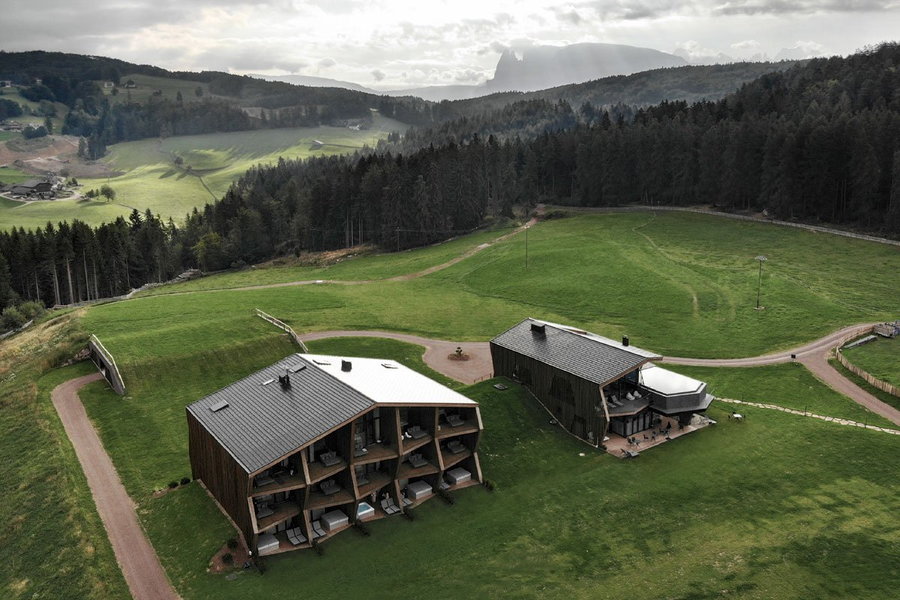
In the end, the architects hope their design will help guests sense the unseen bonds around them. “Boundaries – between past and future, between dream and reality, between inside and outside: noa* makes the invisible lines visible, which become part of the full picture and, above all, instead of a separation, a connection between two worlds.”




